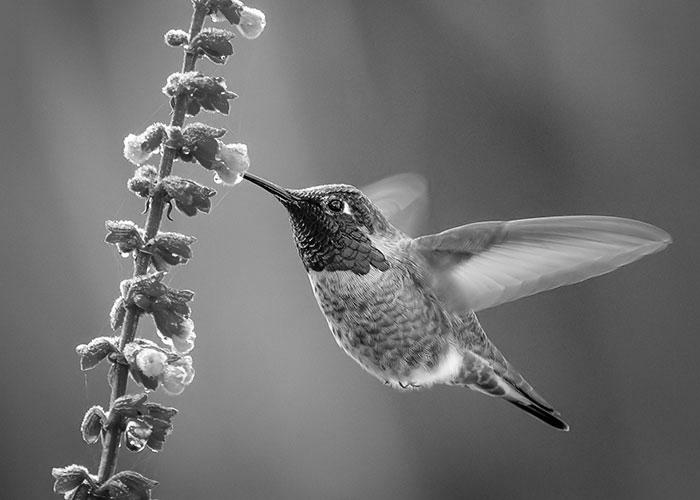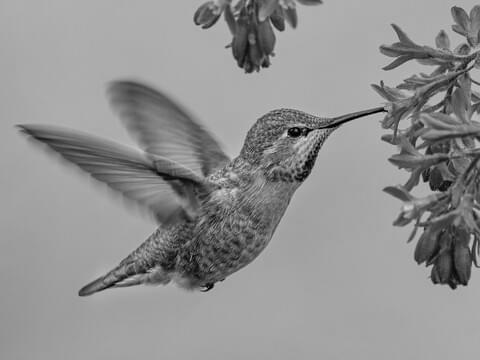’s Hummingbird,
a Profile
’s Hummingbird (Calypte anna)
Is a husky, 4-inch-long bird.
This bird inhabited the chaparral-slopes of the Pacific coast and smog free skies of California.
Yet, these hummingbirds have not only survived, but have prospered with the rampant human development.
Few species of birds have adapted so well to the changes of wild-lands to concrete jungles as well as ’s hummingbird has.
fact, they have expanded their range into British Columbia, and into Arizona as a result of exotic landscaping that we bring into our rural and suburban lives.
Perching atop the tallest tree with a view of the nectar sources, male ’s secure their territories and signal for potential mates by a combination of songs and displays.
The song is an unmusical series of scratchy notes, and the display is an elaborate dive followed by a more intimate side-to-side flight (a bit of bird romance).

Foraging females are allowed to share the available food sources, but other males are treated as intruders and are quickly chased away.
While feeding, both male and female emit a sharp «tzip» sound.
For their part, females fashion the sturdy nests of plant down and spider webs. Lichens camouflage the exterior, and tiny feathers cushion the interior of the nest.
Nests in the wild favor oak groves, but nests can be found in gardens very close to our homes and human activity.
’s hummingbirds are not a true migratory bird.
They do not make long distance flights to spend the non-breeding season in some tropical habitats.
But, they do move about the breeding range after nesting chores are completed because much of their range doesn’t experience freezing winter weather.

They take advantage of the abundant flowering plants you and nature have to offer brought on by winter rains and your landscape choices.
Males begin singing and displaying as early as November, when most migratory species are settling in on their tropical wintering grounds.
Breeding continues until late spring, often resulting in a second clutch of 2 dull white eggs the size of a navy bean.
Incubation: is 14 to 19 days.
Nestlings: fledge in about 18 to 25 days.
Broods: 2 possibly 3
Diet: Insects and nectar
Similar species:
Males unmistakable when red crown is seen but beware of poor lighting conditions. Females and immatures are fairly large and gray breasted, and often show the distinctive rosy-red gorget color on the throat.
’s and the two Archilochus hummingbirds are the most likely identification contenders, but are smaller with whiter breasts and different call notes.

Range Map
Return to top of ’s hummingbird
Hummers Mating
Feeding hummingbirds
Hummingbird Feeders
Hummingbird
Hummingbird Gardens
to hummingbird main page
Enter your search terms Submit search form
Web
gardening-for-wildlife.com
Enter your E-mail Address
Enter your First (optional)
Then
’t worry — your e-mail address is totally secure.
I promise to use it only to send you Gardening For Wildlife.
